Why Do People Like the Beef From Mcdonalds
Why McDonald'southward Burgers Are So Succulent
Burger chain McDonald's is the number one ranked fast-food restaurant in all of United States, according to QSR. McDonald's, which raked in over $21 billion in sales in 2018 lone, has a pretty all-encompassing carte du jour. Yet and even so, they have ever been known offset and foremost as a burger and fries joint. The chain is famous for selling approximately 75 burgers every 2d, which means that the fast-food giant must be doing something right when they sandwich 1 of their signature all-beef patties inside a bun. McDonald'south hamburgers are besides ane of the brand's original menu items, which sold for just 15 cents when they debuted in the 1940s.
And then what is information technology that makes McDonald'south burgers so well-loved, in spite changes in attitudes towards meat consumption, and fast food in full general? It turns out that in that location is more to it than burgers that only taste good.
Mashed dug into the procedure behind the famous McDonald'southward hamburger, which has gone through a serious evolution over the years. So, keep and lodge a cheeseburger combo and get set for a deep dive into the reason McDonald'southward burgers are and then succulent.
McDonald'due south burger patties are 100% beef
Contrary to the popular imitation facts that McDonald'south burgers are made with "pink slime," all of their patties are really made from 100% USDA-inspected beef, McDonald's confirmed. Prior to 2011, similar many other fast-food chain restaurants in the United States, McDonald'due south did use the meat-based filler commonly known as pink slime in their burgers. The substance in questionwas beef, merely just technically. Pink slime is really made from finely-textured beef trimmings that are and so treated with ammonia before being basis up into a pink paste. Is it gross? Yes, but thankfully pink slime is no longer an ingredient in McDonald'southward hamburgers.
As function of a widespread effort to debunk the negative consumer perceptions that surrounded their beefiness products, the company hired old MythBuster Grant Imahara to prove to customers that their well-known claim to serve all-beefiness patties was true. Imahara went to the Cargill processing plant in Fresno, California to see for himself what goes into a McDonald's "100%" beef patty. In the end, he found that McDonald's patties are, indeed, 100% beef equally claimed.
McDonald'south burgers are fabricated with specific cuts of beef
You may have heard that McDonald's burgers are made from entire cows that are put through a meat grinder — including the nastier bits like the eyeballs, lips, snouts, and brains. However, many media outlets, including Tastemade and Snopes, take gone on to evidence that this is not, in fact, the case. Co-ordinate to the McDonald'due south website as well as a Concern Insider written report that gives a behind-the-scenes look into their US processing plant, Cargill, the process could not be more different from what the public might perceive.
McDonald'south makes their patties out of a few specific cuts of beefiness, which is crucial to ensuring that their products are of a loftier enough quality to compete in today'south market. While you lot won't find any of the fanciest butcher's cuts in your McDonald's takeout burgers, they do utilize the trimmings from cuts similar chuck, circular, and even sirloin to create the familiar flavor profile of their signature beef blend. And while they don't boast their meat as existence grass-fed, the cows they use are for the most role fed on grass for the first half of their lives, before being finished on a diet of grass, minerals, and grain.
McDonald'southward standard burger patties are flash frozen for optimal freshness
Immediately after the ground beef blend is formed into patties in the processing plant, in that location's another of import step that contributes to the archetype flavor nosotros've come to know and love from the Golden Arches. The standard McDonald'southward burger is flash-frozen immediately after shaping in order to ensure that information technology is equally fresh every bit possible when it hits the grill at your local restaurant. According to the company (via Business Insider),"Flash freezing helps ensure the quality of our burgers when they are cooked in our eatery."
Dissimilar slower freezing processes, which can cause larger water ice crystals to course in foods, flash freezing can chill foods to temperatures below 0 degrees Fahrenheit in just a affair of a minute. The flash-freezing process has changed the way Americans eat. Information technology was developed by Clarence Birdseye, the founder of Birdseye frozen foods, in 1924 and is responsible for much of the convenience food we enjoy today.
As McDonald's explains, it typically takes between 2 to 3 weeks from the 24-hour interval a burger patty is formed in a processing institute to the day it is served to a customer. Equally such, flash freezing is one way that McDonald's ensures they're serving hamburgers that taste as fresh as they peradventure can.
McDonald'south Quarter Pounder burgers are made with fresh beefiness
Even though flash freezing is a very effective way to get fresh tasting, succulent burgers in the hands of customers, it is not without some serious drawbacks. Over the years, McDonald's has come under fire multiple times for the practise. Rival fast-food burger concatenation Wendy'southward has repeatedly taunted McDonald's for their use of frozen beef patties in ad campaigns, first with a 2016 spoof website featuring ads for "freezy diskz" and once again in 2018 with an emoji-laden video spot that accused McDonald's of selling "0% fresh never frozen beefiness."
In an effort to combat the negative perceptions about their burgers, and to compete inside the "ameliorate burger" infinite pioneered by higher-cease fast-food chains like Shake Shack, McDonalds made a commitment to make all of their Quarter Pounders with fresh beef that is cooked to society by mid-2018.
The reception to the modify was overwhelmingly positive, with even Nutrient & Wine proverb that the freshly-fabricated Quarter Pounder patty is surprisingly good. Only one twelvemonth afterwards making the modify, QSR reported that McDonald's had sold over forty one thousand thousand more Quarter Pounders than the previous yr.
McDonald'southward burgers are seasoned on the grill
McDonald's really prides itself on the fact that their burgers — both fresh and frozen alike — are made with beef, salt, pepper, and absolutely nothing else. But they don't cease at a curt list of ingredients, they really have things a step further. At McDonald'southward, seasonings aren't added at all until the burgers achieve their local grills, where the cooks add salt and pepper every bit the patties are grilled to order. Co-ordinate to McDonald's, this "[brings] out all that great beef gustatory modality."
Interestingly, at that place's some leeway in how McDonald's restaurants season their signature burgers. McDonald's representative Eunice Koekkoek told Business Insider that they actually adjust the seasoning based on the state that the burgers are existence served in, because "some countries like more table salt than others."
Unsurprisingly, American customers take a tendency to like their fast food on the salty side. Reutersreported that one order of McDonald's chicken nuggets served in the Us contains 1.5 grams of salt, compared with only 0.6 grams of salt in the U.K. The salt content in burgers doesn't vary nearly as much, though. "Overall, fast-food burgers served upwards an boilerplate of 1.3 grams of salt (or 520 milligrams of sodium) across all countries, with only small national differences," Reuters revealed.
McDonald'due south makes an effort to use relatively local beef in its burgers
McDonald's makes a serious attempt to utilise locally-produced beef whenever it is possible. Co-ordinate to the fast-food concatenation's website, the beef used in the burgers served in the United states come from a handful of producers within the country. This exercise is what makes the fast-food giant ane of the largest purchasers of USDA-inspected beef in the entire land. However, they too supplement their stock with meat from USDA-approved producers in New Zealand, Australia, and Canada.
As Eunice Koekkoek, a McDonald's representative, told Business concern Insider that the visitor as well works hard to ensure that the cows they apply for meat are slaughtered in their country of origin equally this helps to reduce the need to transport livestock across long distances. This exercise also helps proceed a focus on locally-sourced ingredients. In Frg, for example, 40% of the beef used in their burgers is sourced from Germany, with the remaining 40% coming from neighboring countries similar Poland and the Netherlands.
McDonald's uses different buns for different burgers
At McDonald's, a burger bun is more than just a vehicle for a great sandwich, information technology is also a critical part of ensuring burger perfection. Have the chain's signature Big Mac, for example. Often, when yous are served a burger that contains two or even three patties (like Sonic's Quarter Pound Double Cheeseburger or any of the burgers in Wendy's double- and triple-decker offerings), y'all are even so but going to get ii pieces of bread. The imbalance betwixt bread and meat in a larger burger can easily lead to what Business Insider writer Hollis Johnson referred to as "beef overload."
The Big Mac is different from its competitors' mega burgers thanks in part to the "lodge" bun — that third piece of bread sandwiched between the Big Mac'due south double patties. Like McDonald'southward other palatial-style burgers, including the Quarter Pounder and Double Quarter Pounder, the bun is toasted and topped with sesame seeds.
However, not all sandwiches get the sesame seed treatment. The chain'southward standard Hamburger, Cheeseburger, and Double Cheeseburgers are all served on a regular toasted bun, equally are some not-burger sandwiches, like the McChicken. The Filet-o-Fish, on the other hand, is in a league of its ain, with its patently steamed bun.
McDonald's has perfected toasting burger buns
Some people might retrieve that a toasted bun is one of the unchanging hallmarks of a McDonald's burger, but that has not e'er been the case. In the 1990s, McDonald's stopped toasting their buns birthday every bit office of an overall effort to increase the speed of service, according to The Motley Fool. Skipping the toasting may take seemed like a modest recipe change, but customers were unimpressed with faster burgers if it meant soggy buns. Then, in 1997, the visitor reversed their conclusion. That change required each store to install $seven,000 worth of equipment, all to just toast some bread!
Every bit part of a larger make overhaul in 2015, McDonald'due south appear even so another change to the way they prepare their buns. In club to ensure juicier, hotter burgers, the chain decided that they would toast their buns for an additional 5 seconds, which would lead to their burgers existence fifteen degrees hotter overall. Another change came along with the improver of fresh beef to the Quarter Pounder, which gets a bun that has been toasted for a total of approximately 22 seconds.
McDonald's holds its vendors to strict quality standards
The components that brand up a McDonald's hamburger, such as beef patties and buns, are not made on site in local stores. Considering of that, the company has to rely on a select few trusted vendors to produce ingredients for them. Because their production is and so spread out, non only beyond the United States but all over the world, the concatenation requires vendors to adhere to a long listing of strict quality control standards that help to ensure a consistent product, according to Business concern Insider. Each box of frozen patties, for case, is labeled with such a high level of detail that they can trace any individual burger back to the cow it came from.
Burger patties even pass through metal detectors before getting packaged and sent to stores so that vendors tin make sure at that place are no foreign objects in the patties. That too ways that no loose items are permitted inside of the processing facilities, including jewelry and plastic pens.
The visitor details an extensive nutrient condom and quality management organisation, including how McDonald'southward holds its vendors answerable, on their website. And, according to The Orangish Canton Register, there are no 2d chances for vendors whose work isn't up to snuff. "In that location's too much at stake for us not to do everything we can," Todd Bacon, head of the fast-food chain's U.S. supply concatenation management, told the publication.
This is the only detail that contains a preservative on a McDonald'southward burger
McDonald's has been taking major steps to make their carte du jour seem appealing to a more health-conscious demographic for years. In 2016, the company announced that they were planning to remove high-fructose corn syrup from all of their buns, replacing it with sucrose, according to Business concern Insider. Even though sucrose is just the scientific name for plain white table sugar (which is not all that much unlike from loftier-fructose corn syrup), the change in ingredients added to the perception that McDonald'south was getting healthier.
That same year, co-ordinate to Fortune, McDonald's also removed bogus preservatives from their craven nuggets. Then in 2018, McDonald's announced that they were finally going to make changes to their burgers. How? By removing all artificial ingredients — including potassium sorbate and sodium benzoate — from their burgers.
Although this in itself doesn't make a McDonald'due south burger a "salubrious" choice, removing artificial ingredients is an important step to take in terms of both consumer perception and nutrient quality. Every bit of this writing, the company proudly states on its menu that the only component of the burgers that contains any artificial ingredients are the pickles, advising customers to "skip [the pickle] if you like."
Burger toppings are carefully crafted at McDonald's
At any given McDonald'south eating place in the The states, there are a total of nine hamburger variations from which to choice. So it should non come as a surprise that people are passionate about which ones they like all-time and which ones they would not be rushing to swallow once again. Yes, people honey to rank McDonald'due south sandwiches, citing the subtle differences between the classic hamburger and the classic cheeseburger, and whether or not a Big Mac is better than a Quarter Pounder with Cheese.
The master difference between the burgers, aside from the fact that the Quarter Pounder series is made with fresh beef, resulting in a thicker patty, is the toppings. Even a cursory glance at their carte will show you that a Double Quarter Pounder with Cheese is very, very different from a Big Mac. While the Quarter Pounder with Cheese boasts ketchup, mustard, pickles, onions, and cheese, the Big Mac swaps out ketchup and mustard for its signature Large Mac sauce, and adds shredded lettuce for actress crunch.
The variations in toppings are so important that there'south a cheat canvass for cooks to reference, that way the customer never ends up with a burger that'south missing their favorite component.
McDonald'south tests its burgers for quality
At this signal, you might think that McDonald's has a trend to micromanage the production of their burgers — and that would not be as well far from the truth. In fact, the fast-nutrient behemothic is so obsessive about making sure its burgers will have the consistent great sense of taste customers look that McDonald's actually builds replica test kitchens at their processing plants to further monitor quality control, according to Business Insider.
Before a batch of burgers can be sent off to its destination, someone at the processing plant is tasked with cooking upwardly some of the patties in the replica kitchen. In that location, a series of comprehensive tests for quality are conducted, including ensuring optimal fatty content and flavor. Once the patties take passed the exam, they're cleared to exist sent to your local McDonald's restaurant.
This is but one component of the chain's overall commitment to quality. According to McDonald'southward, some of the other steps the chain is taking include a commitment to sustainably-sourced beefiness, rigorous policies concerning the use of antibiotics in livestock, and a "back to nuts" arroyo that manages to stick to the visitor's roots without eschewing innovation. And, for the client, that all just ways a more delicious burger.
Source: https://www.mashed.com/230552/why-mcdonalds-burgers-are-so-delicious/
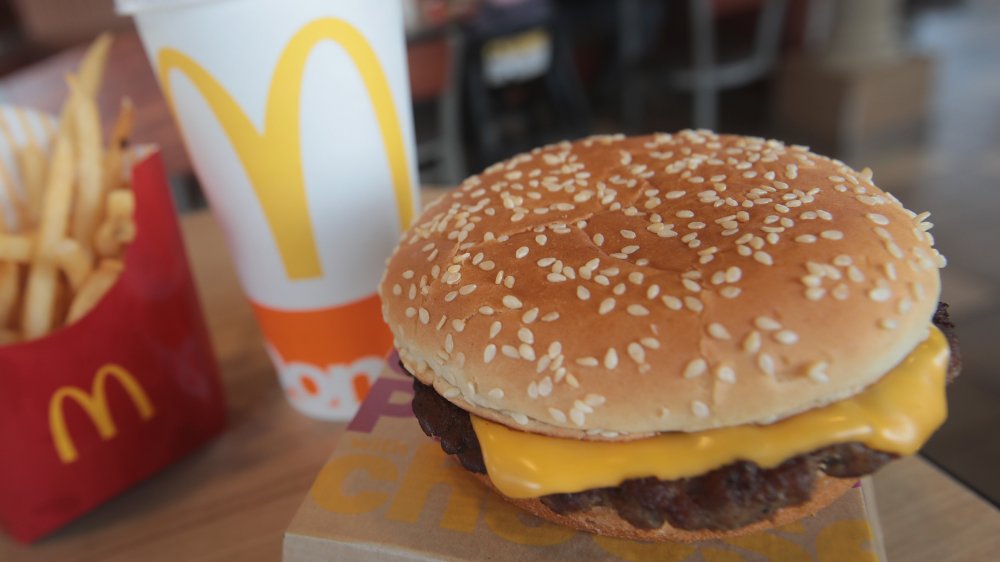
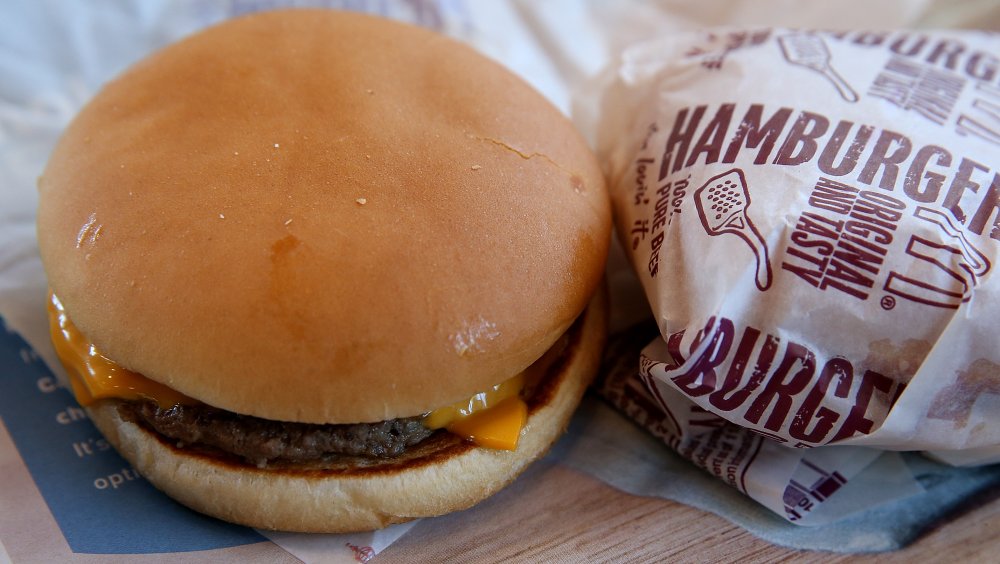
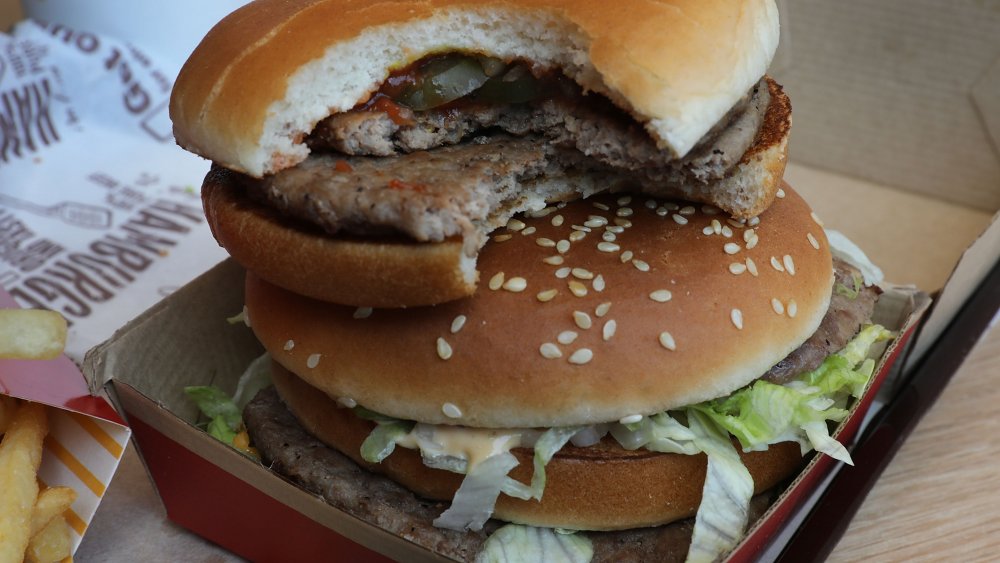
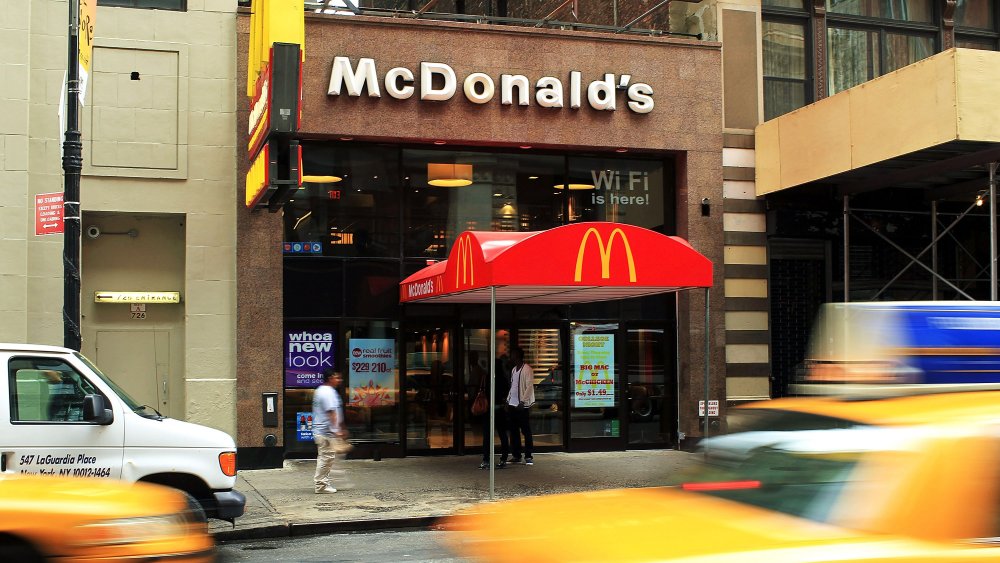
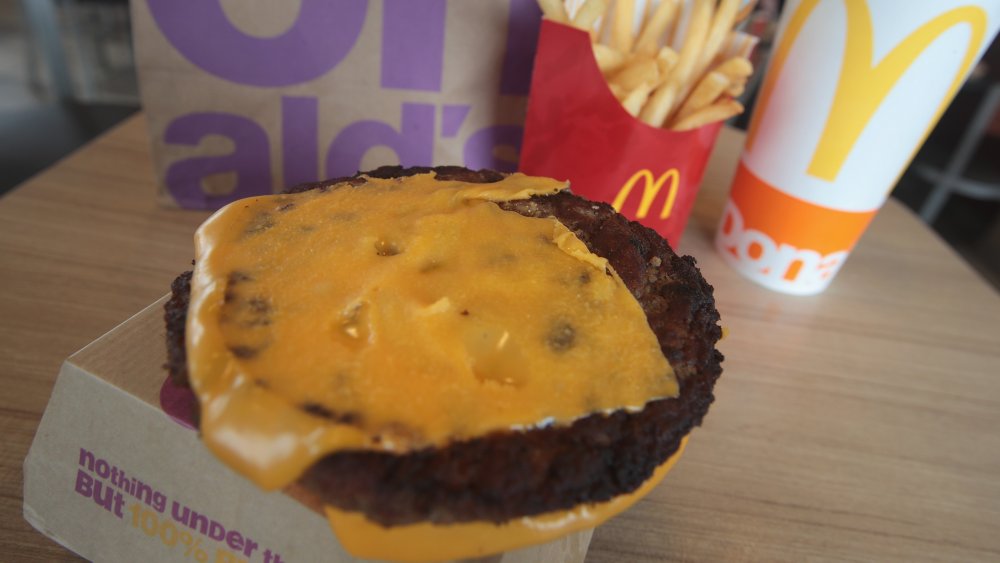
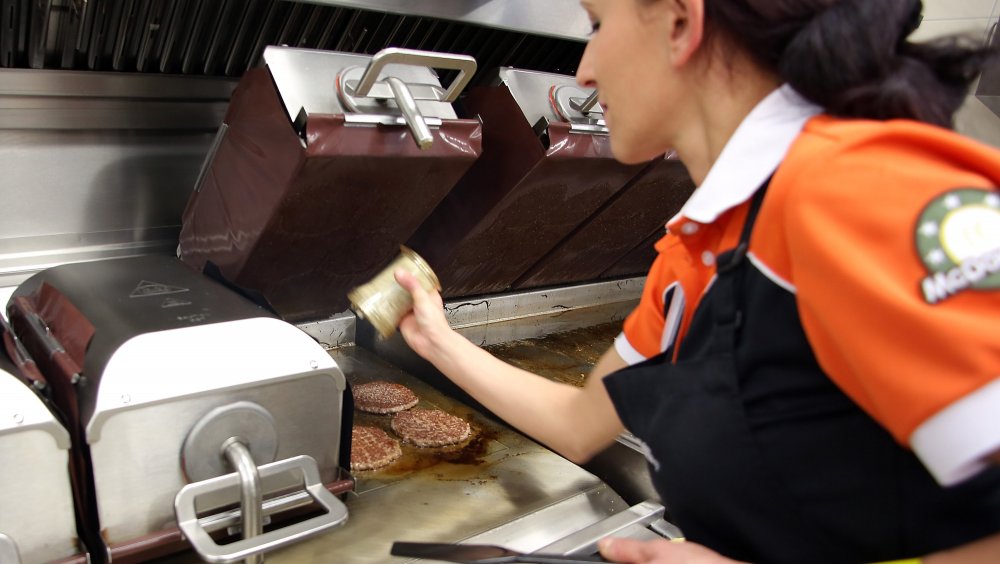
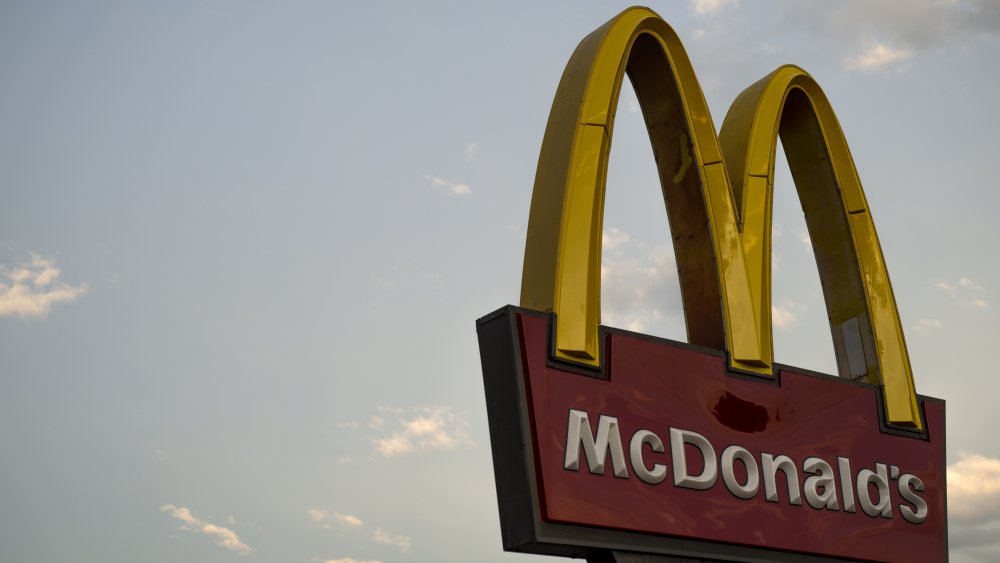
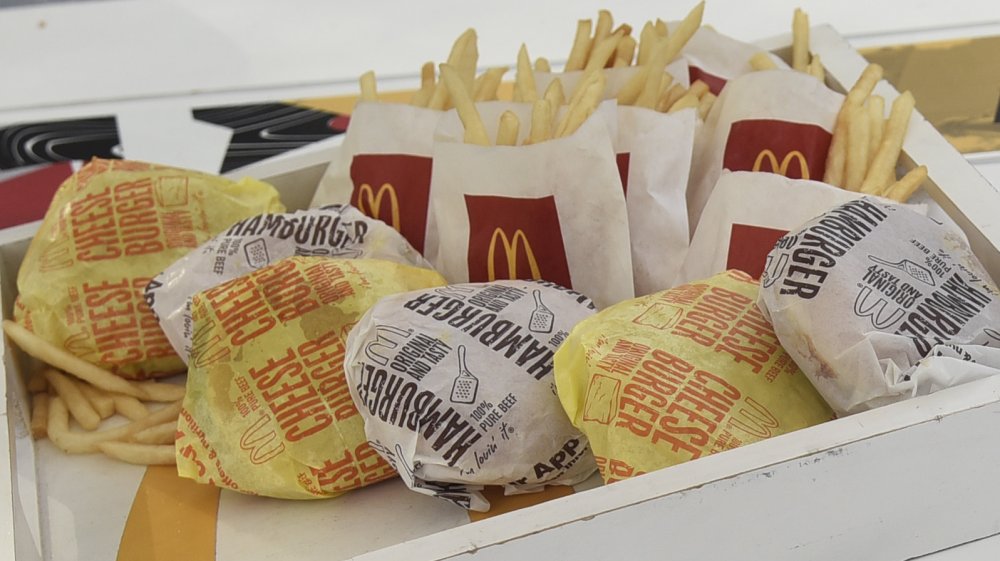
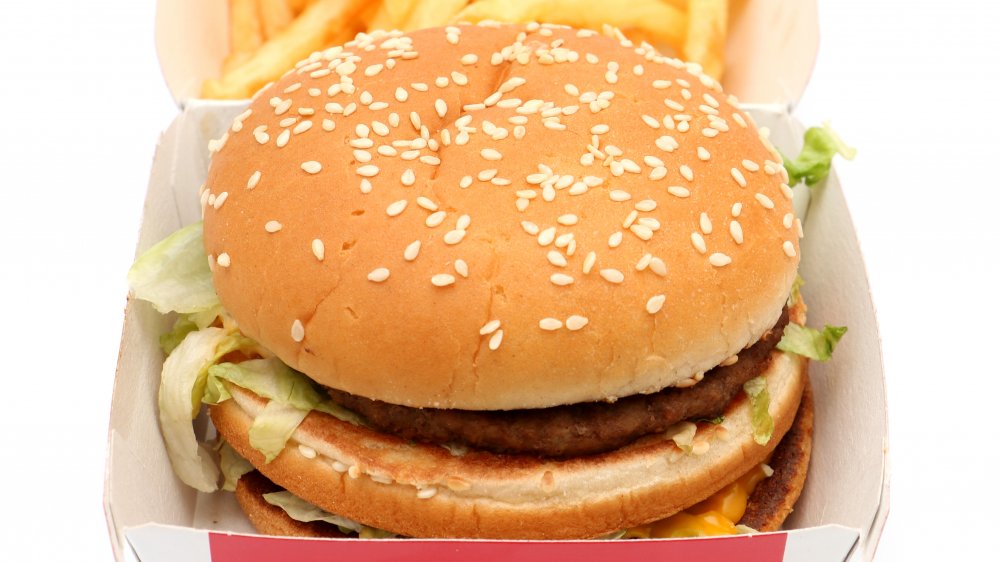
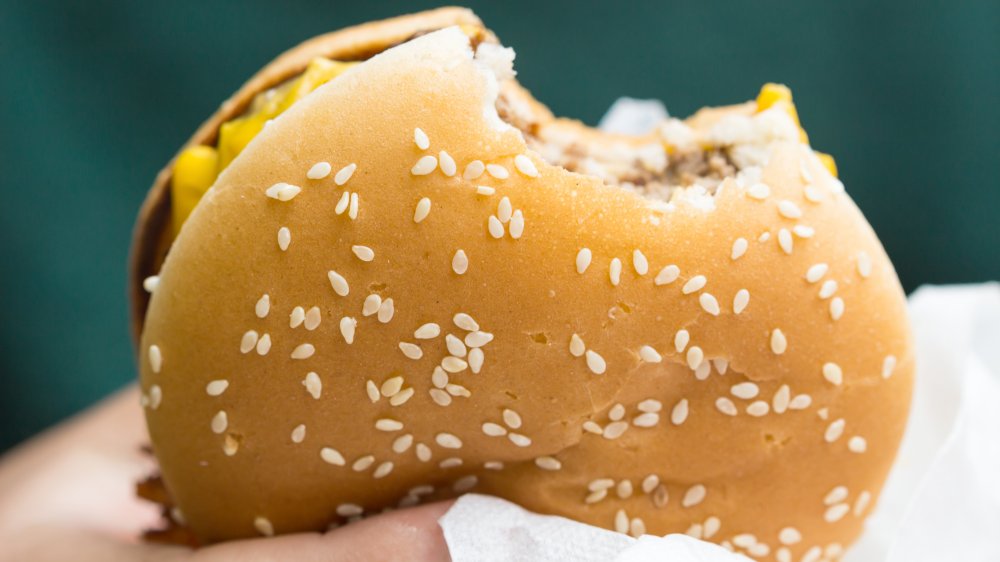
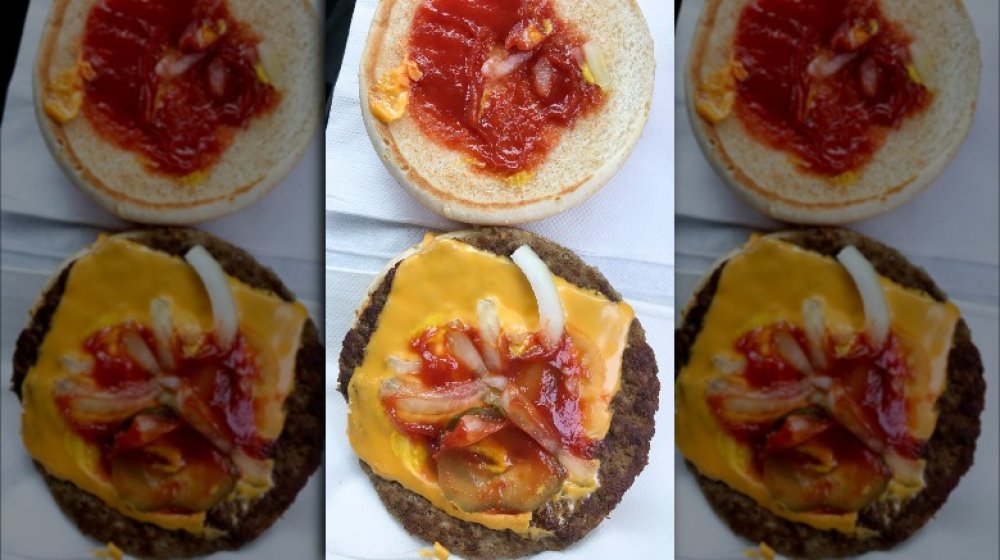
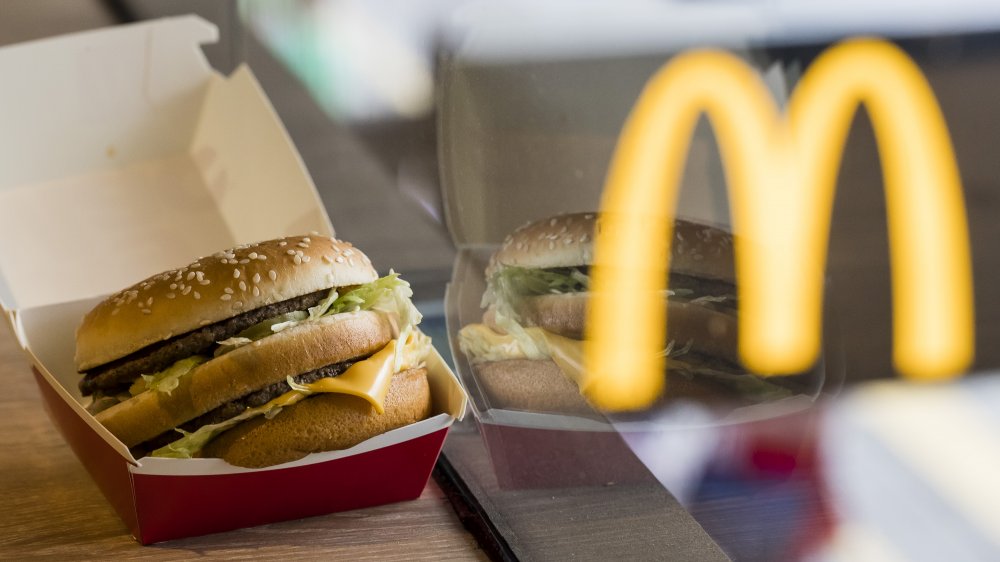
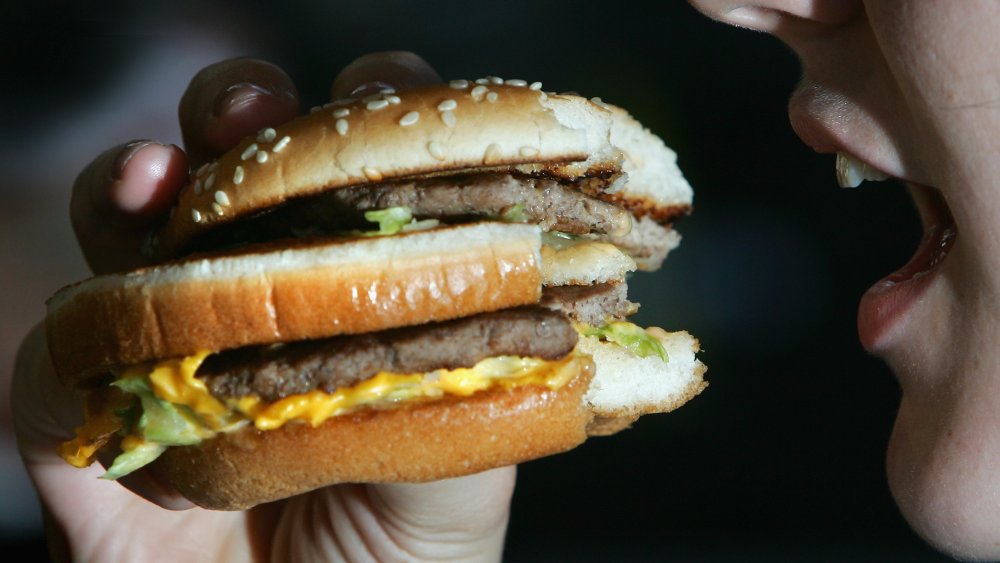
0 Response to "Why Do People Like the Beef From Mcdonalds"
إرسال تعليق